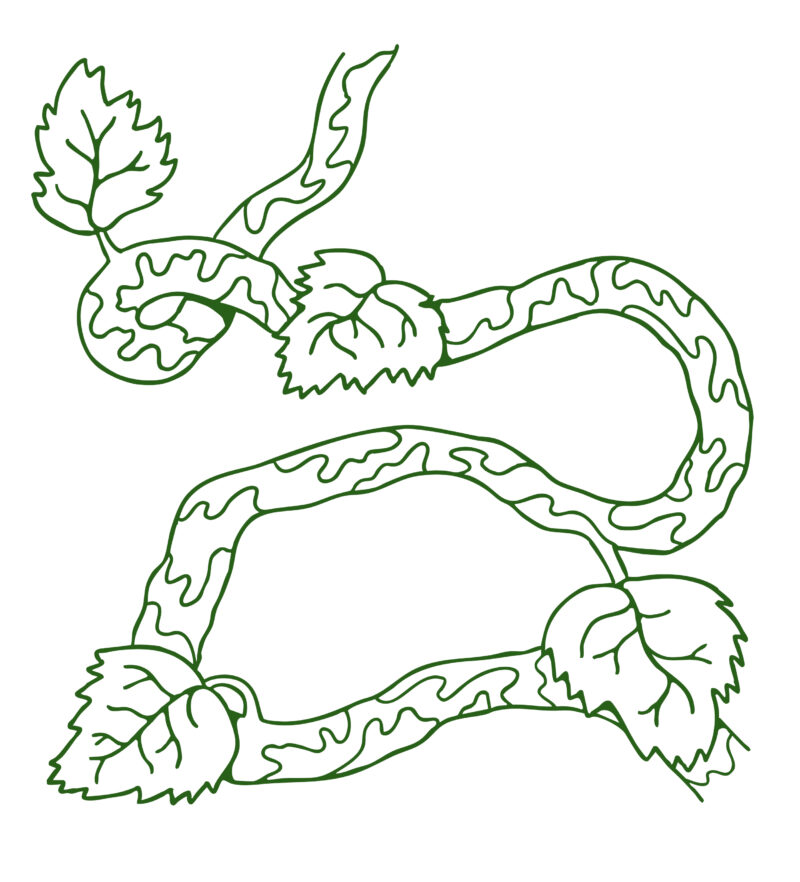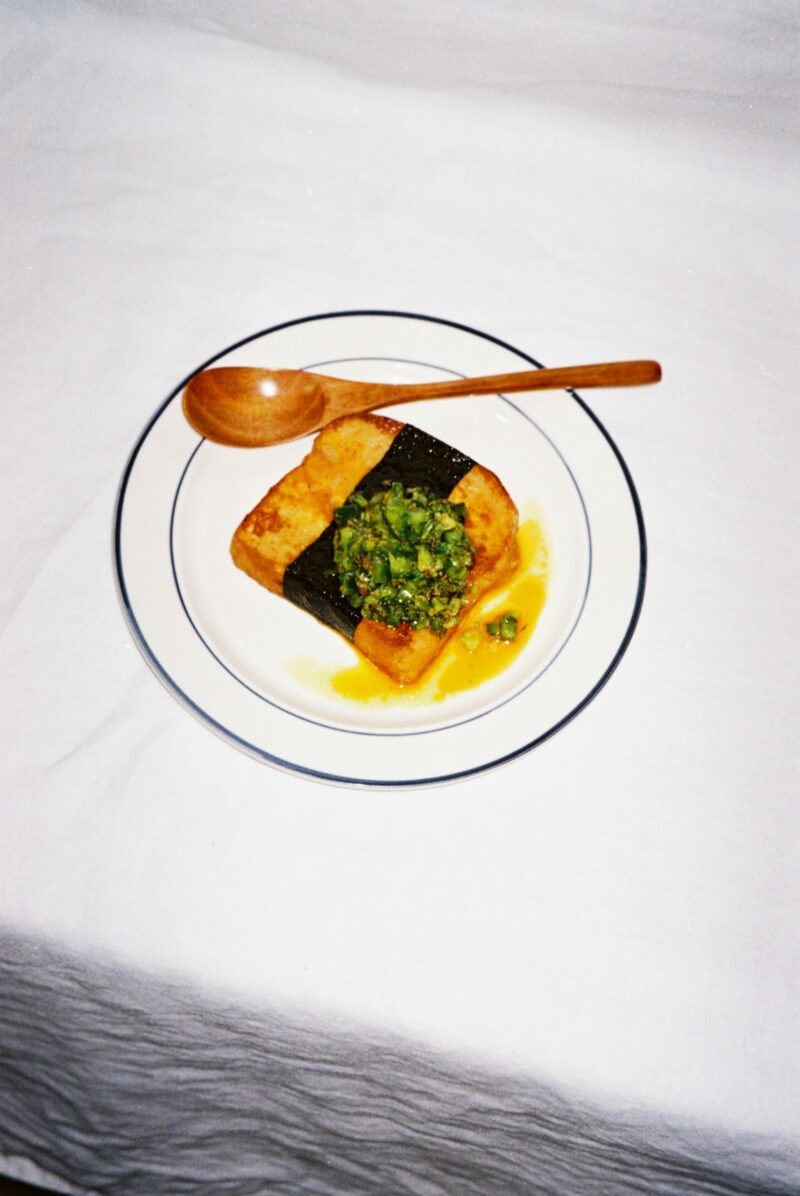Coco Picante in agave land
a spirited deep dive into mezcal, pulque and tequila
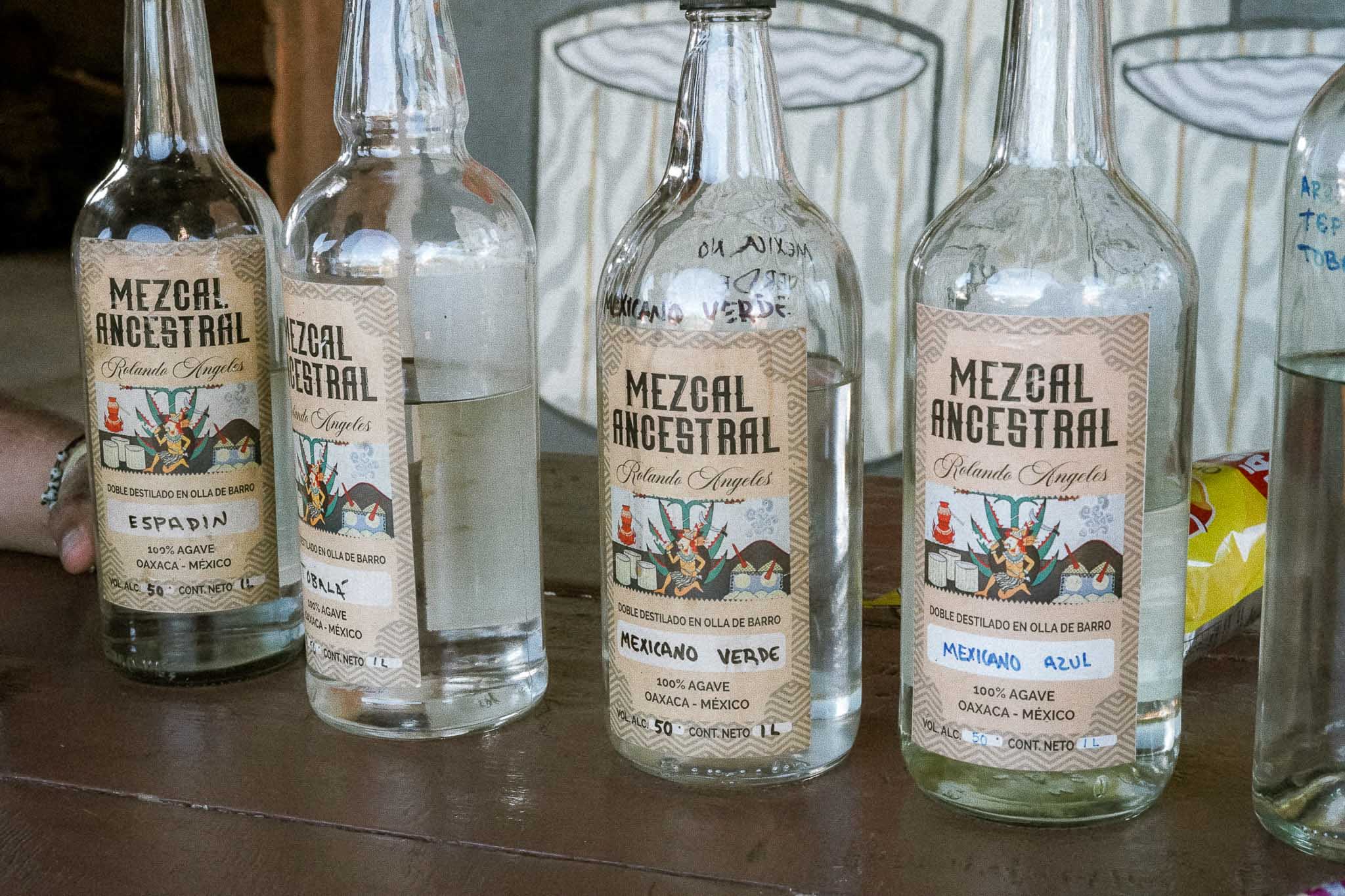
Photo: Ioana Negulescu
It is ten in the morning and I have been awake for at least five good hours. El Hidalguense is crowded and the fragrance of lamb barbacoa is unavoidable. I don’t know if it is the jetlag, the frustration of my lost bag, or the disbelief that I am actually in Mexico, in flesh and bones, but the notion of space and time feels like it’s slipping away. I place my order: coffee, pulque and michelada, to accompany my barbacoa and chicatana ants tacos. Despite my two tortillas topped with a generous handful of fried giant ants, it is the pulque that stands out for its strangeness. Fermented and viscous. Unlike anything I had tried before.
Many glasses of pulque followed. I learned that its viscosity varies based on region and Oaxaqueños proudly claim their thin pulque is the best; and their mezcal too.
Agave (also referred to as maguey) is ubiquitous in Mexico. My only connection to it? A string of tequila hangovers from my younger years, still lingering in my head like the colourful paper banners that flutter above Oaxaca in preparation for Día de los Muertos. And just like the art of perforated paper for those garlands, processing agave is serious business.
There are over two-hundred varieties of agave. Only one is used for tequila – blue agave (agave tequilana). The rest are a white canvas for pulqueros and mezcaleros across the country. Now take that number and multiply it by a multitude of variables: flavour profiles, climate, terroir, processing techniques … and you start to grasp the vast, almost infinite spectrum of pulque and mezcal. Both are fermented, but mezcal is also distilled.
If the agave’s leaves are used in cooking – to wrap food or seal pots, it is the heart of the plant, the piña, that this story is about. This centre, where all the leaves converge, has a sole purpose: reproduction. Over many years, it quietly stores energy in the form of sugars, all in preparation to push out a towering quiote: a single flowering stalk that marks its final act.
It blooms once, then dies. A rather dramatic exit, unless, of course, the agave is taken to the barber first, its leaves shaved off, and its heart harvested to make mezcal.
Pulque is made from aguamiel – the sweet, natural sap produced in the piña, at the peak of the plant’s maturity, right before it is ready to shoot the quiote. The liquid is harvested and left to ferment naturally. The difference in viscosity comes from the type of agave used – in Oaxaca, it is never viscous. Sometimes natural, other times curado (meaning that fruits are added to the fermentation process), it is traditionally served in a jícara, a half sphere bowl made by drying the skin of a local type of gourd.
It takes eight to twelve years for an agave plant to mature and produce aguamiel. Once tapped, tlachiqueros can harvest pulque daily for almost half a year, with one single plant producing about five hundred litres of the sugary liquid.
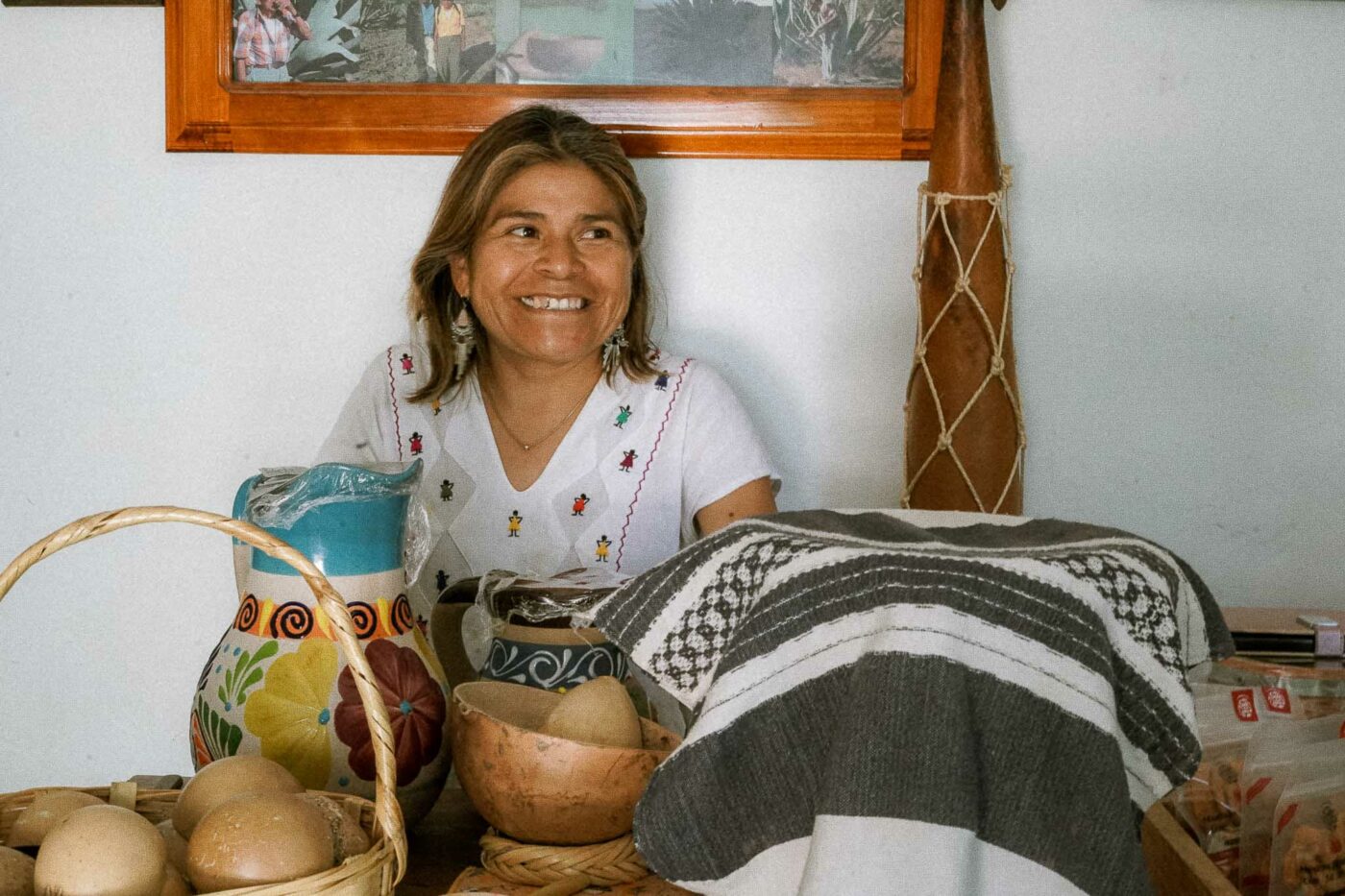
Doña Reina is one of the few women to run a pulque business, and her approach to the drink aligns well with my values: driven by curiosity and rather experimental. During my visit, I try eight-month-old pulque, as well as a pulque co-fermented with tepache (a fermented pineapple drink sweetened with panela), sprinkled with worm salt as is traditional. Her guava pulque curado blushed a pretty pink and carried bright, floral aromas. Throughout my time there, men came and went, each carrying different containers to fill with pulque. The agave industryis, to this day, male-dominated and there is a lack of statistical data on its gender distribution.
Diego was my pulque and mezcal guide for the day. “At some point, some years ago, I was working as a driver. An older Frenchman hired me and together we visited many different palenques (mezcal distilleries). He knew a lot about the drink and through him, although I had grown up in the state of Oaxaca, I met mezcaleros and discovered a universe I had no idea about”, Diego tells me. During the pandemic, he asked the Frenchman to teach him about mezcal via a series of online one-on-one sessions. I giggled, echoing his eagerness to learn.
Diego’s stories captivated me for the entire twelve hours we spent together, driving, first to Doña Reina’s pulquería, then, from one palenque to the next and learning all there is to know about mezcal.

Photo: Ioana Negulescu
Diego lets me know there are between seventy and ninety varieties of mezcal agave in Oaxaca, though the exact number is uncertain due to the lack of precise identification of some types. Some agaves can be cultivated, while others only grow in the wild. When wild agave is harvested, a rule of ethical commitment comes into play (required by law in some states, unspoken but widely respected in others): the mezcalero must propagate the plant and replant it in the same location, helping preserve the local biodiversity of wild agave.
Every type fits within a species family that shares some genetics, like the size of the plant, the shape, or colour of the leaf and the flavour profile, once processed. It can take between eight and thirty years for agave plants to mature for mezcal production, some varieties taking longer and having larger yields than others.
Most of us know mezcal to be ‘the smoky Mexican spirit’, but Diego tells me that if a mezcal is very smoky, it is most likely faulty. Having tried a large array of mezcal, I can certainly confirm that. I have found dry, herbal notes, at times mint; some are fruity and floral, others earthy and woody. I even found lactic notes in a mezcal.
The smoky qualities of a mezcal are part of the beginning of the process. Once the piñas are harvested, they are roasted for three to seven days. One of the techniques used to prevent too much smoke influencing the flavour, is adding water into the roasting pit. The cooking helps the complex sugars (like inulin) transform into fermentable sugars (like fructose) that yeasts can feed on. Roasted agave isn’t just a flavour in Mexico – it’s part of the collective palate, something nearly everyone knows by heart and holds with affection.
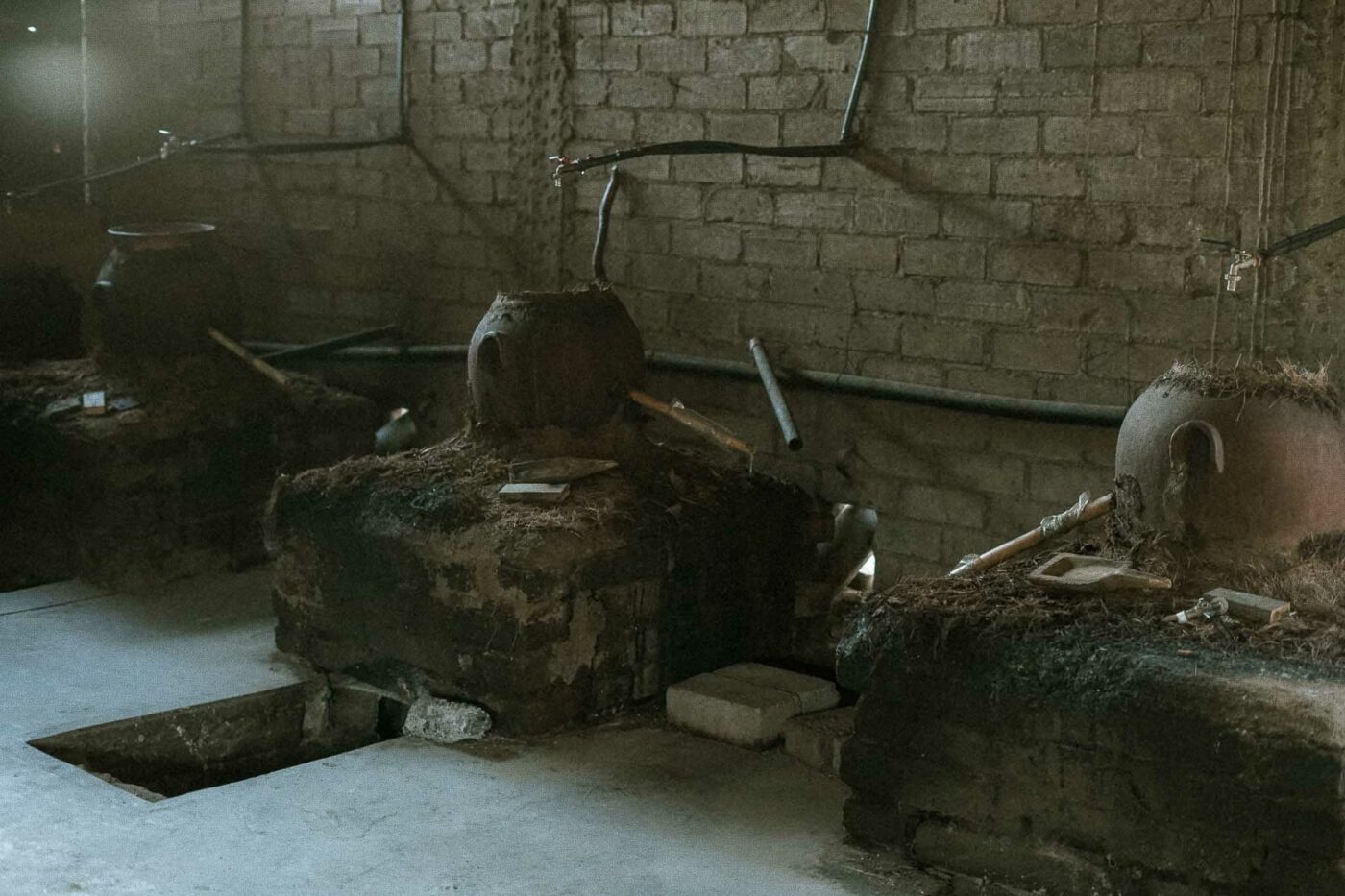
Once cooked, the mezcalero will crush the piñas, to extract both the juice and the fibres Once these are fermented (usually for one or two weeks), the concoction is distilled twice. What ends up in the bottle is a combination of cuts, a decision point in the distillation process where the mezcalero separates different parts of the alcohol as it comes out of the still. Each of these cuts have different qualities. The head (the first cut) usually contains methanol and it is discarded and used for disinfection and cleaning. The heart is the main product – this is where the complex aromatic compounds lie. Finally, lower in alcohol, the tails contain heavier compounds and bring bitter, sour, oily and earthy notes.
Finally, the mezcalero will decide whether they will blend the mezcal into an ensamble, bottle it as is, or age it. Unlike tequila, mezcal is considered to express its true personality when young. While ageing can occur, the complex character of the agave is often overshadowed by the influence of oak.
“Humans have always been curious on what they can distill, so at some point, trying to capture the soul of animals in the drink, people tried to distill heart into the mezcal. When they realised that didn’t taste quite right, they decided to use chicken or turkey breast instead. This type of mezcal is called pechuga: the breast hangs inside the distillation tank, and fruits are also added to the process”, adds Diego as he educates me about mezcal distilling. I laugh at how strange that sounds and ask him if the meat alters the flavour. He believes it does, ever so slightly. Pechuga is only distilled for special occasions and adds yet another dimension to the universe of mezcal.
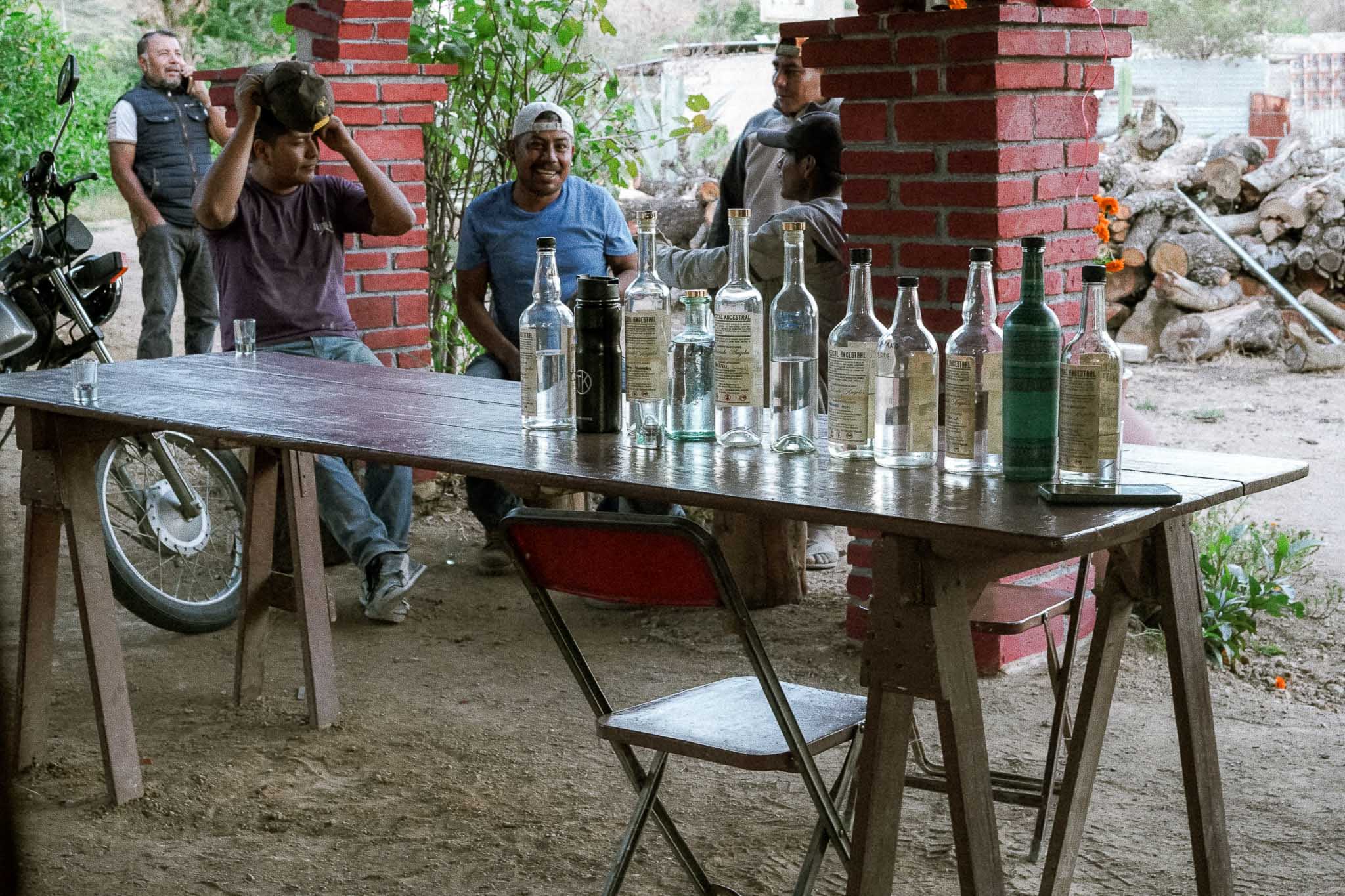
Photo: Ioana Negulescu
There are three main methods to produce mezcal. Mezcal ancestral is the most traditional, and it involves roasting the agave in a cone-shaped pit. The roasted piñas are then crushed by hand using a wood mallet or stone tahona, the mash is naturally fermented in organic containers (clay, wood or stone) and distillation happens in clay pots with cane or wood tubes.
The main differences between mezcal ancestral and artisanal are that the latter tend to use a stone mill (often pushed by a horse) or mechanical shredder for the crushing of the roasted piñas, the fermentation can happen in concrete vats and the distillation in copper stills (although some use clay pots).
Finally, there is industrially produced mezcal, where the piñas are roasted in special steam ovens, fermentation happens in either concrete or steel tanks and distillation in copper or stainless steel stills.

Before there was tequila, there was mezcal. And before mezcal, there was pulque, the original agave drink, fermented and consumed for over two thousand years. When the Spanish arrived in the 16th century, they brought copper stills and a new technique: distillation. And just like that, mezcal was born.
For centuries, all distilled agave spirits were simply called mezcal, including what we now know as tequila, raicilla, bacanora and others. Tequila broke away early. Thanks to the proximity to export routes and an industrial edge, it rose to global fame. Meanwhile, the forgotten middle child, mezcal, stayed rural and improvised, only used for home consumption. With no certification or regulation, its quality varied wildly – sometimes dangerously, with methanol-tainted batches made in makeshift stills.
Tequila got its Denomination of Origin in the 1970s. Mezcal only gained attention in the 1990s, when a handful of producers decided to reclaim it, borrowing tequila’s framework, while keeping the ancestral spirit alive. They held onto tradition, biodiversity and magic-in-a-bottle quality that makes every small batch different.
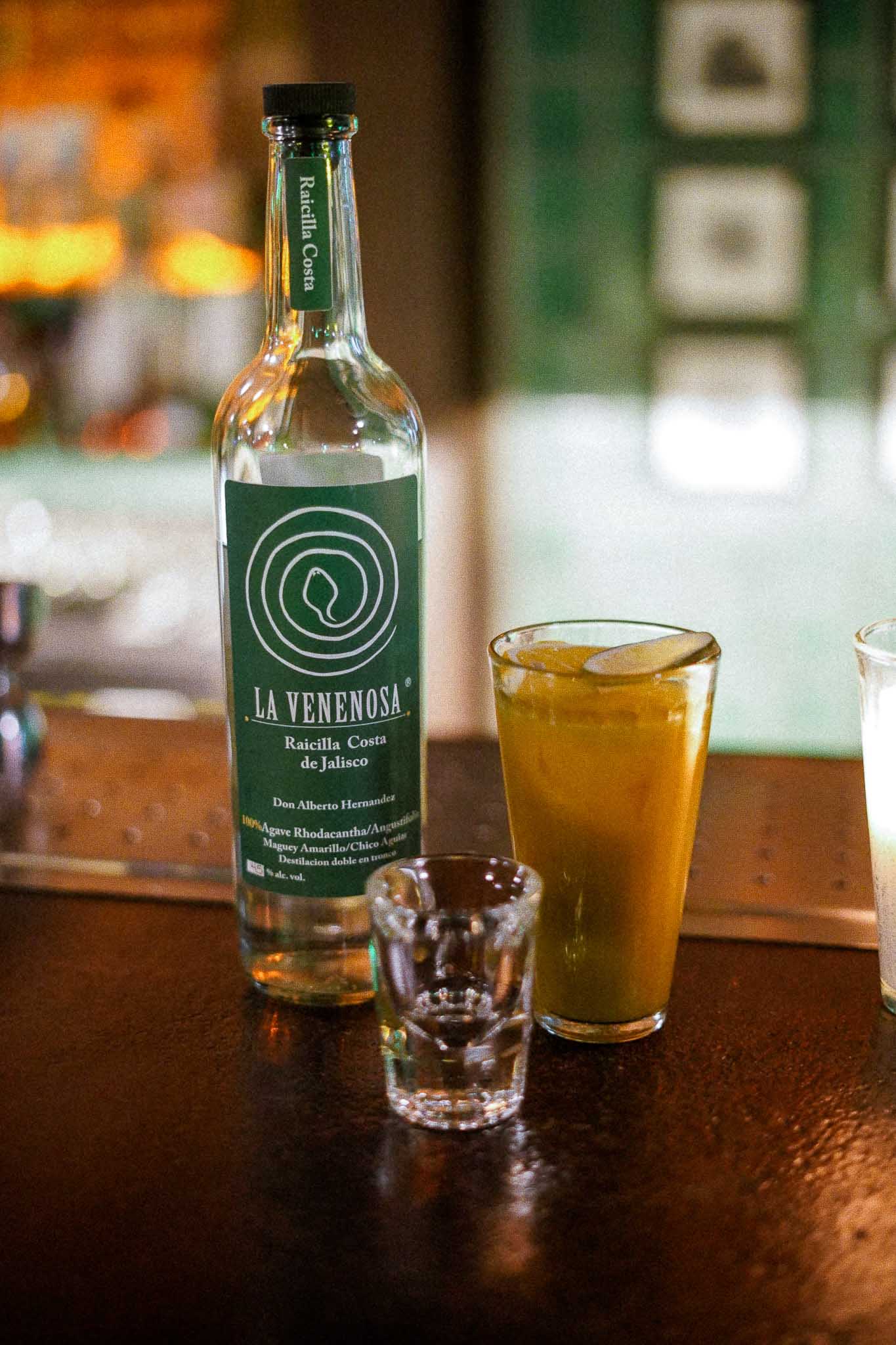
Photo: Ioana Negulescu
Mezcal isn’t alone. Bottles of raicilla, mezcal’s eccentric cousin from the coast and mountains of Jalisco are well sought after and very rare. Bacanora, from Sonora, was outlawed for decades, until recently. And then there’s sotol – not technically an agave spirit at all, but close enough to crash the party and sit proudly on the same shelves as the cool-kid mezcals. The world of agave and agave-adjacent spirits is much bigger and funkier than most people realise. And we’ve only just started sipping.
— This article is part of the Coco Picante series — a collection of stories that will be featured in the upcoming Coco Picante cookbook. Follow along on Instagram @cocopicante_ for recipes, behind-the-scenes, and more chapters from the journey.



